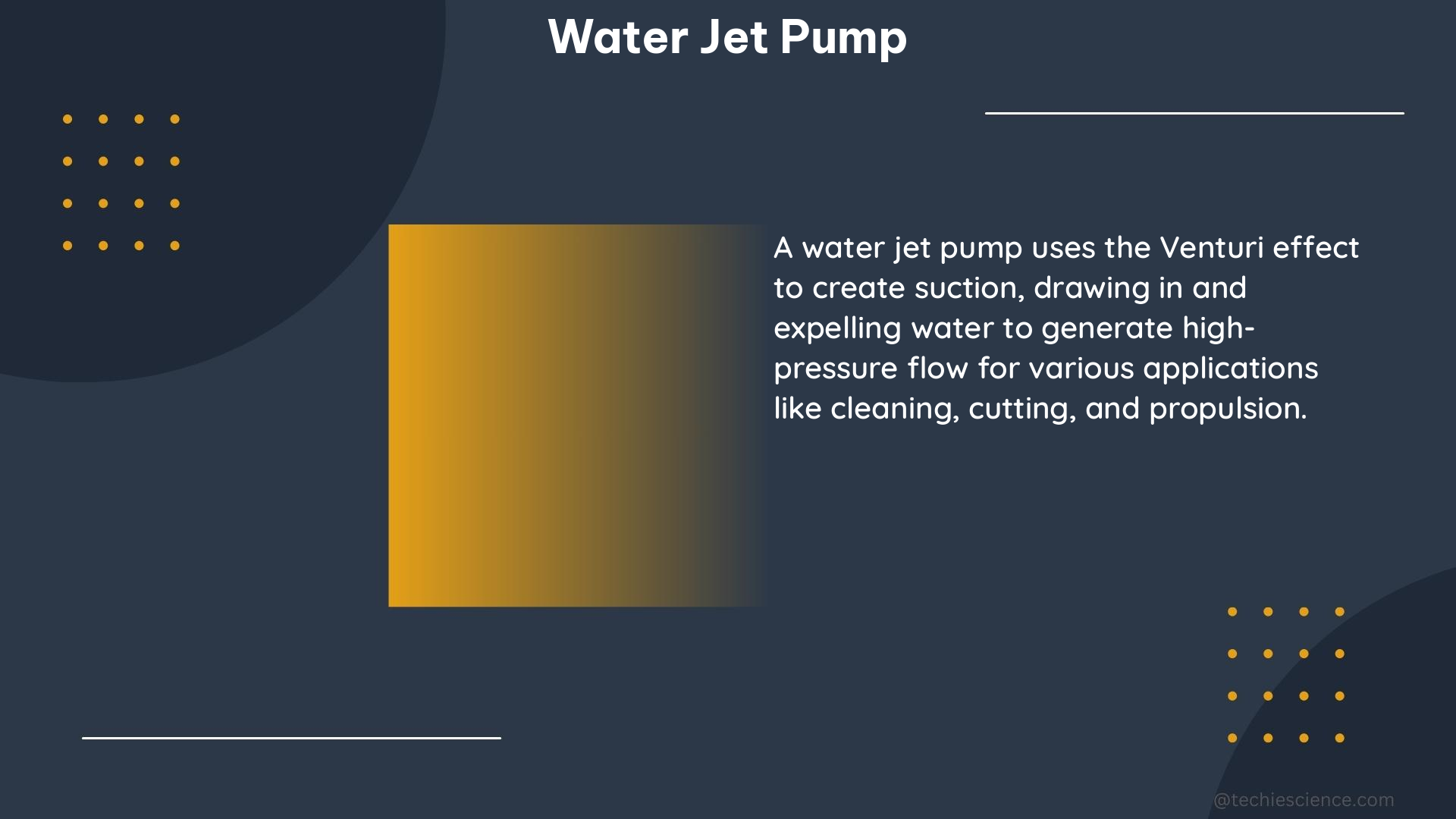Water jet pumps are essential components in a wide range of applications, from water transportation and desalination to industrial processes. Understanding the intricate technical specifications and performance metrics of these pumps is crucial for ensuring optimal operation, maintenance, and efficiency. In this comprehensive guide, we will delve into the key measurable and quantifiable data points that define the performance and characteristics of water jet pumps.
Flow Rate (Q)
The flow rate, or the volume of water produced per unit time, is a critical parameter for water jet pumps. This metric is typically measured in liters per minute (LPM) or gallons per minute (GPM). High-performance water jet pumps can achieve flow rates ranging from 100 LPM (26.4 GPM) to 1,000 LPM (264 GPM) or even higher, depending on the pump size and application requirements.
Pressure (P)

The pressure, or the force exerted by the water jet, is another essential characteristic of water jet pumps. This parameter is commonly measured in pounds per square inch (PSI) or pascals (Pa). Depending on the pump design and application, water jet pumps can generate pressures ranging from 100 PSI (689 kPa) to 5,000 PSI (34.5 MPa) or more.
Power (N)
The power required to drive a water jet pump is a crucial factor in its overall performance and efficiency. This parameter is typically measured in watts (W) or horsepower (HP). High-capacity water jet pumps can consume anywhere from 10 kW (13.4 HP) to 100 kW (134 HP) or more, depending on the flow rate and pressure requirements.
Efficiency (η)
The efficiency of a water jet pump is the ratio of the useful work done by the pump to the total energy input. This parameter is typically expressed as a percentage, with the most efficient water jet pumps achieving efficiencies in the range of 70% to 90%.
Thrust Coefficient (K_T)
The thrust coefficient is a dimensionless parameter that quantifies the thrust generated by the water jet pump. It is calculated as the ratio of the thrust force to the product of the water density, flow rate, and velocity. Typical values for the thrust coefficient range from 0.8 to 1.2, depending on the pump design and operating conditions.
Head Coefficient (H*)
The head coefficient is another dimensionless parameter that describes the pressure increase generated by the water jet pump. It is calculated as the ratio of the head to the product of the water density and the square of the velocity. Typical values for the head coefficient range from 0.2 to 0.8, depending on the pump design and operating conditions.
Power Coefficient (P*)
The power coefficient is a dimensionless parameter that quantifies the power consumption of the water jet pump. It is calculated as the ratio of the power to the product of the water density, flow rate, and the cube of the velocity. Typical values for the power coefficient range from 0.01 to 0.05, depending on the pump design and operating conditions.
Mesh Count
The mesh count refers to the number of mesh elements used in the computational fluid dynamics (CFD) analysis of a water jet pump. This parameter can significantly impact the accuracy and computational efficiency of the simulation. Typical mesh counts for water jet pump CFD analyses range from 1 million to 10 million elements, depending on the complexity of the pump geometry and the desired level of detail.
y+ Value
The y+ value is a dimensionless parameter that indicates the quality of the mesh near the walls in CFD simulations. It is typically required to be within the range of [0, 30] for the SST k–ω turbulence model, which is commonly used in water jet pump simulations. Maintaining the y+ value within this range ensures accurate modeling of the boundary layer and wall effects.
Start-up and Emergency Acceleration Transient Characteristics
The behavior of high-speed axial flow water-jet pumps during start-up and emergency acceleration is an important consideration. These transient characteristics can impact the pump’s performance and durability, and must be carefully analyzed to ensure reliable and safe operation.
By understanding and mastering these technical specifications and performance metrics, engineers and designers can optimize the design, operation, and maintenance of water jet pumps, ensuring their efficient and reliable performance in a wide range of applications.
Reference:
- Dynamic behaviors of blade cavitation in a water jet pump with inlet guide vanes: Effects of inflow non-uniformity and unsteadiness
- Measuring Well Performance – WaterWorld Magazine
- Measurable Goals Guidance for Phase II Small MS4s
- Efficiency of Jet Pumps
- Transient Hydrodynamic Characteristics of a High-Speed Axial Flow Water-Jet Pump

The lambdageeks.com Core SME Team is a group of experienced subject matter experts from diverse scientific and technical fields including Physics, Chemistry, Technology,Electronics & Electrical Engineering, Automotive, Mechanical Engineering. Our team collaborates to create high-quality, well-researched articles on a wide range of science and technology topics for the lambdageeks.com website.
All Our Senior SME are having more than 7 Years of experience in the respective fields . They are either Working Industry Professionals or assocaited With different Universities. Refer Our Authors Page to get to know About our Core SMEs.